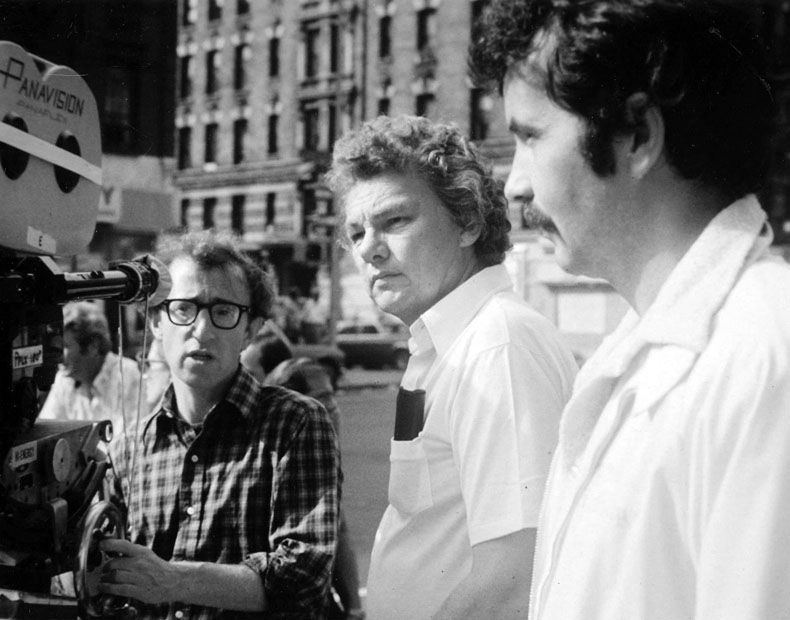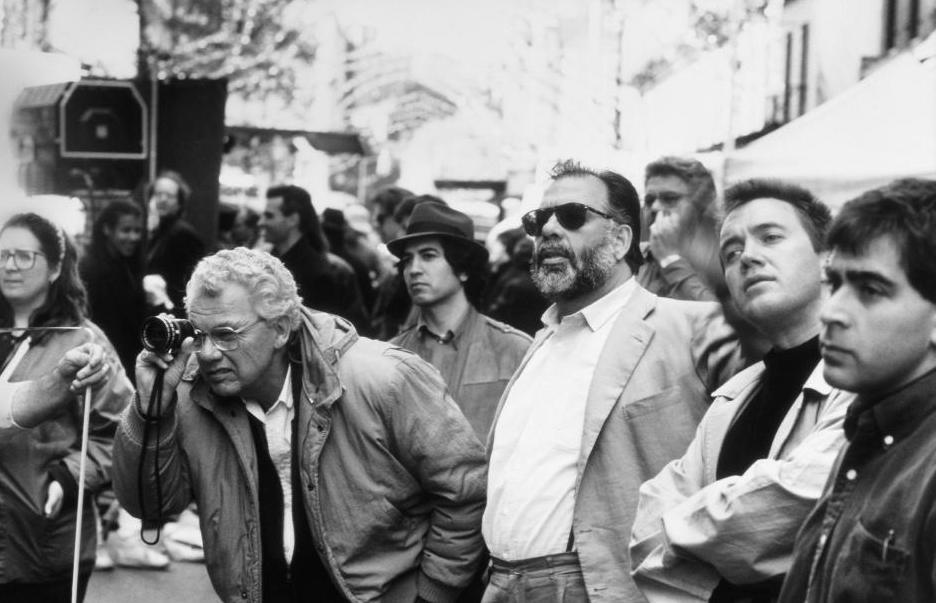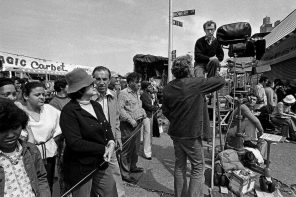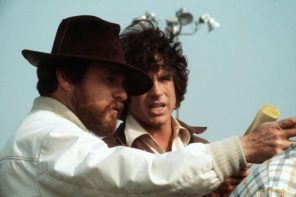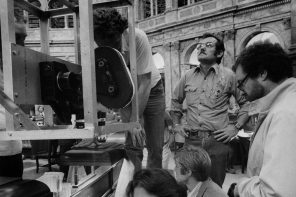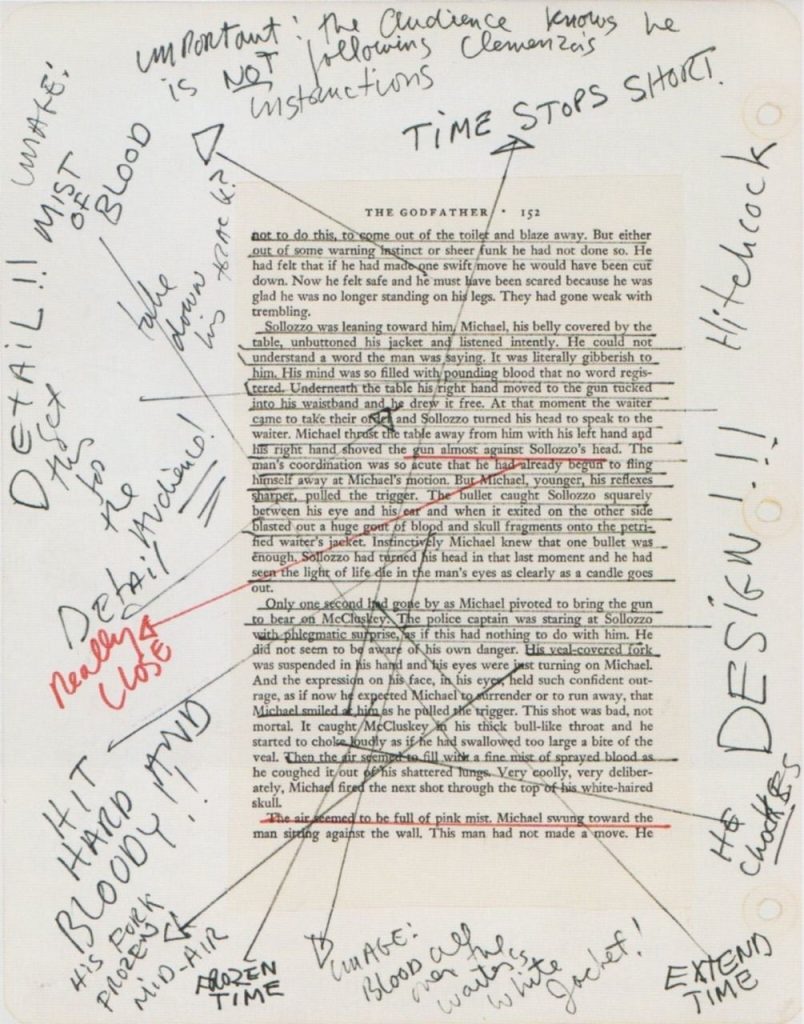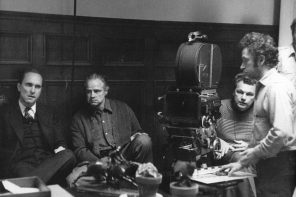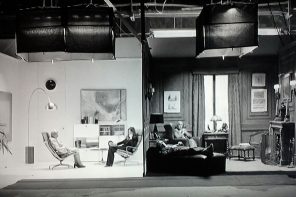
In Memory of Gordon Willis (1931-2014) by Nelson Carvajal: “Gordon Willis was a great cinematographer not just because he mastered the fundamentals of lighting design. He was a great cinematographer because he knew how to look at us, even when we couldn’t look at ourselves.”
In the fall of 2006, Globe reporter Mark Feeney talked with Gordon Willis at his Falmouth home about his life and work. Here is a transcript of his conversation with the acclaimed cinematographer. It’s a brilliant interview, full of golden nuggets.
There’s a quote from the interview you did for the book ‘Principal Photography,’ “Most art, if you want to call film an art, comes out of craft.”
Yeah. I’ll expand on that. Somebody will say, “How did you do that?” Well, you know, it’s not really “how” you do something that’s important, it’s “why” you do it. It’s what you do and why you do it that’s important, I said; then how becomes part of the chain. “How” is your craft. It’s something you should know and learn and then, like paintbrushes, you pick up what you need to do what you do. But you can’t transpose an idea without your craft. The natural thing for someone to do, we all tend to reduce or expand things to a level that we understand. But what you’re doing is you’re avoiding your ability to function [laughs]. You can really function well if you reduce or expand. They may hire you for that. But the real meaning of it is — like the guy who doesn’t really know how to light so he keeps reducing things so he doesn’t have to light — “Let’s shoot it on the lawn.” So bottom line is: You do have to learn your craft. A lot of kids shoot movies, they don’t shoot the movie. They have no ideas. What they do is go out and shoot everything, put it together in film school, then they try to make a movie out of it. That goes on with people who should know better, who are making money.
Craft Track honour the work of Gordon Willis, “what’s unique about Mr. Willis is that just about everything he said was a golden nugget. The closer we looked, the more we learned — which Jeff wrote about in his post, One Morning with the Master: 5 Things I Learned from Gordon Willis. Here it is, everything we ever posted and learned from our time with Mr. Willis. You can also enjoy the complete unedited audio interview here or on our Through the Lens iTunes podcast.” —The Collected Wisdom of the Late Gordon Willis
INTERVIEW PART 1:
INTERVIEW PART 2:
Also Recommended Reading:
- Steven Soderbergh interviewed Gordon Willis for a documentary he made about his first feature, End of the Road
- Legendary cinematographer Willis on the theory and practice of Allen’s Manhattan
- Gordon Willis Speaks (Purple Rose of Cairo)
- Gordon Willis interviewed by Chris McCoy
- An AFI Seminar with Gordon Willis, ASC
- John Bailey’s salute to Gordon Willis
Director Aram Avakian & Gordon Willis (his 1st credit as DP) assess the scene on set of END OF THE ROAD, 1970 pic.twitter.com/vUung3Qcrs
— Larry Wright (@refocusedmedia)
What is narrative filmmaking to you?
Gordon Willis: Good storytelling. I always said that you could photograph a good story badly and it wouldn’t matter, but you can shoot a bad story well and it’s not going to help the story at all. It’s not. But you get the two together, and it’s great.



